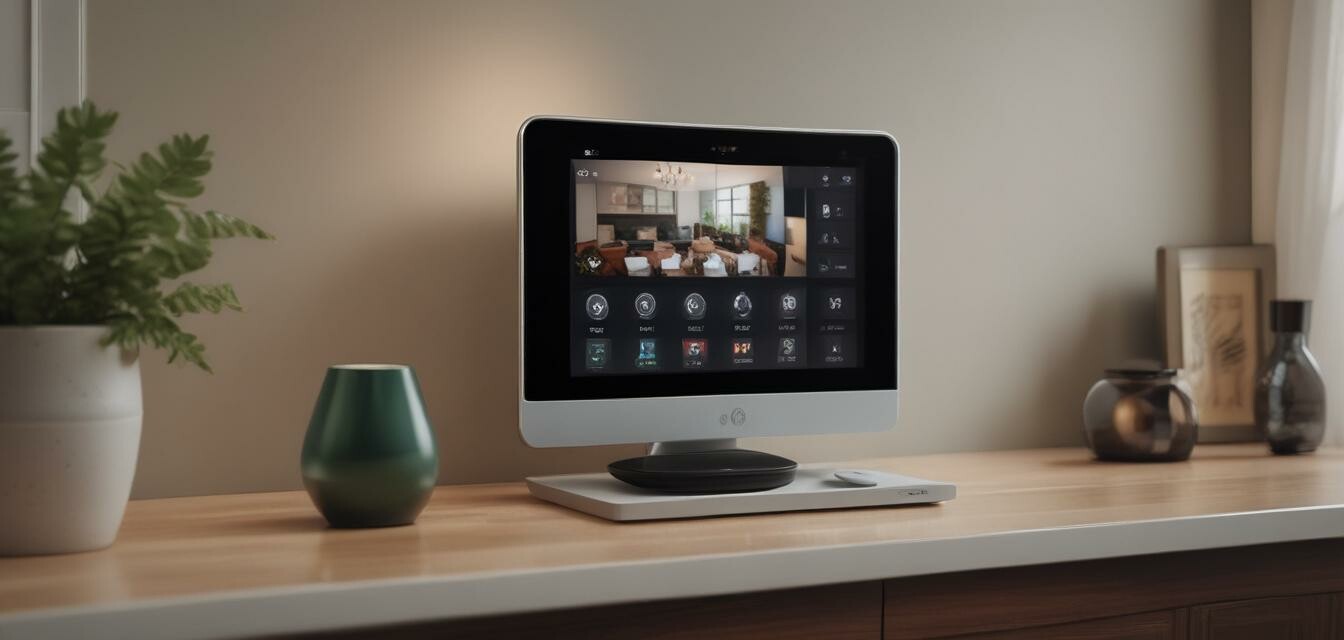
The Ultimate Guide to Home Automation Devices
Key Takeaways
- Home automation devices enhance security and convenience.
- Compatibility with existing systems is crucial.
- Select features that meet your specific security needs.
- Consider future expansions and compatibility with smart home ecosystems.
As we continue to embrace the convenience of technology, home automation devices have become essential for enhancing home security and making our lives easier. In this guide, we will explore the best home automation devices in 2025, their features, benefits, and how they integrate into your smart home ecosystem.
What are home automation devices?
Home automation devices are technologically advanced systems that allow homeowners to control various aspects of their home remotely. From smart locks to cameras, these devices can communicate with each other, providing enhanced security and convenient accessibility.
Essential features of home automation devices
| Feature | Description |
|---|---|
| Remote Access | Control your devices from anywhere using a smartphone or tablet. |
| Automation | Set routines to automate actions, like locking doors or turning on lights. |
| Integration | Compatibility with other smart home devices for seamless operation. |
| Alerts and Notifications | Receive instant notifications for security breaches or system updates. |
| Voice Control | Use voice commands to control devices, enhancing convenience. |
Benefits of home automation devices
Implementing home automation devices in your home comes with a myriad of advantages:
- Enhanced security: Keep an eye on your property through surveillance and notifications.
- Increased convenience: Control multiple devices from one app, simplifying your daily routines.
- Energy efficiency: Automate your lighting and heating systems to save on energy costs.
- Scalability: Expand your system as your needs grow, easily integrating new devices.
Types of home automation devices
Here are the key categories of home automation devices that are popular in 2025:
- Smart locks - Secure entrances with keyless access and remote locking.
- Smart cameras - Monitor surroundings with real-time streaming and alerts.
- Alarm systems - Provide complete monitoring and security solutions for your home.
- Motion sensors - Detect intrusions and trigger alerts when unusual movement occurs.
- Home security systems - Comprehensive solutions combining multiple security devices.
- Home automation devices - Integrate various elements of smart technology for cohesive control.
Compatibility with existing systems
Before investing in home automation devices, you must consider their compatibility with your current systems. Many devices can operate as standalone units, while others require specific hubs or ecosystems to function optimally. Make sure to research compatibility with your existing home security systems, thermostats, and appliances.
Considerations for future expansions
When choosing your home automation devices, think about your long-term needs:
- Will you want to add more automated devices in the future?
- Are there specific brands that dominate the market with a wide range of compatible products?
- Do you prefer a particular smart home ecosystem like Google Home or Amazon Alexa?
Tips for selecting the right devices
Beginners Section
- Start with a central hub that can control multiple devices.
- Choose devices that offer robust customer support and frequent updates.
- Look for products offering flexibility in connectivity, such as Wi-Fi and Zigbee.
- Read customer reviews and consider feedback from other users.
Conclusion
Home automation devices are revolutionizing the way we secure and manage our homes. By understanding what to look for, what types are available, and how they can fit into your life, you can make informed decisions that benefit your home security greatly. As technology continues to advance, ensuring your home remains secure and well-managed will only become easier.
Pros
- Improved security protocols.
- Convenience of controlling devices remotely.
- Energy savings through automated functionalities.
Cons
- Potential compatibility issues.
- Initial investment cost may be high.
- Dependence on Internet connectivity.
